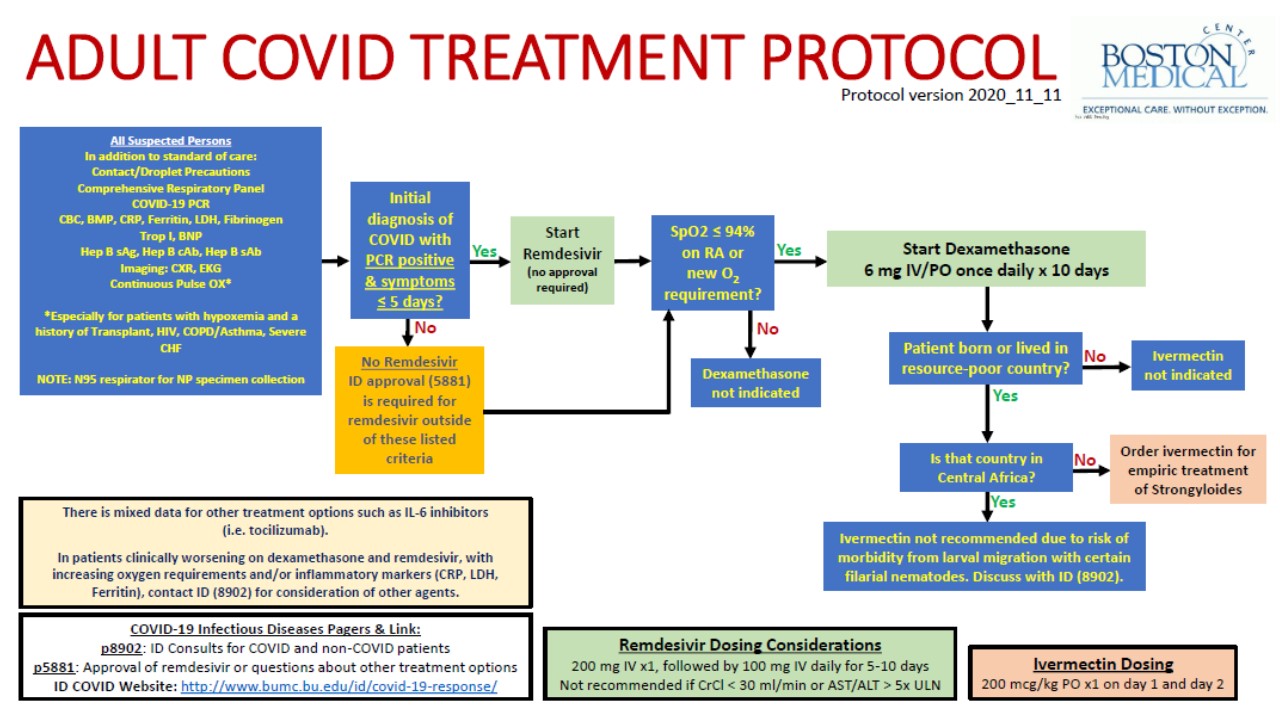Canada's First Long COVID Guidelines: Diagnosis, Prevention, And Treatment

Table of Contents
Understanding the Diagnosis of Long COVID in Canada
Defining Long COVID According to Canadian Guidelines
The Canadian definition of Long COVID, as outlined in the new guidelines, typically involves symptoms lasting more than four weeks after an initial COVID-19 infection, and importantly, these symptoms cannot be explained by another condition. The guidelines also recognize the varied presentation of Long COVID, with symptoms clustering in different ways among individuals.
- Common Long COVID symptoms: Fatigue, brain fog ("COVID fog"), shortness of breath, chest pain, heart palpitations, loss of smell or taste (anosmia/ageusia), persistent cough, muscle aches, joint pain, gastrointestinal issues, and neurological symptoms such as dizziness and headaches.
- Diagnostic Criteria: The guidelines emphasize a thorough clinical evaluation, including a detailed history of the initial COVID-19 infection and a comprehensive review of current symptoms. Specific diagnostic tests aren't always definitive for Long COVID itself, but are used to rule out other conditions. This might involve blood tests, imaging studies (chest X-rays, echocardiograms), pulmonary function tests, and neurological assessments depending on the presenting symptoms.
The Role of Healthcare Professionals in Diagnosis
Accurate diagnosis of Long COVID in Canada requires a comprehensive medical evaluation by a healthcare professional. This evaluation is crucial to differentiate Long COVID from other conditions that may share similar symptoms.
- Specialist Referrals: Depending on the symptoms, referral to specialists may be necessary. This could include pulmonologists (lung specialists), cardiologists (heart specialists), neurologists (brain and nervous system specialists), gastroenterologists, and rheumatologists.
- Ruling Out Other Conditions: The diagnostic process involves systematically investigating and ruling out other potential causes of the persistent symptoms, such as other viral infections, autoimmune diseases, or other underlying medical conditions. This may involve various investigations and specialist consultations.
Prevention Strategies for Long COVID: What Can Canadians Do?
Vaccination and Boosters
Vaccination against COVID-19 remains the most effective way to reduce the risk of developing Long COVID. Studies have consistently demonstrated a significant reduction in the likelihood of developing Long COVID among those who are fully vaccinated.
- Reduced Risk with Vaccination: Data suggests that vaccinated individuals have a considerably lower risk of experiencing persistent symptoms post-COVID-19 compared to unvaccinated individuals. The exact percentage reduction varies depending on the study and vaccine type.
- Booster Shot Recommendations: Staying up-to-date with COVID-19 booster shots is crucial for maintaining a high level of protection and further minimizing the risk of Long COVID. Consult your healthcare provider for the most up-to-date recommendations on booster eligibility.
Lifestyle Choices and Risk Mitigation
While vaccination is key, certain lifestyle factors may also influence the risk of developing Long COVID or the severity of symptoms.
- Healthy Lifestyle Recommendations: Maintaining a healthy diet, engaging in regular physical activity (as tolerated), practicing stress management techniques (like meditation or yoga), and avoiding smoking are all beneficial for overall health and may help mitigate the risk.
- Resources for Lifestyle Support: Numerous resources are available to support Canadians in adopting healthy lifestyle choices. These include government health websites, community health programs, and online resources offering guidance on nutrition, exercise, and stress management.
Treatment Approaches for Long COVID in Canada
Multidisciplinary Approach to Care
The management of Long COVID in Canada necessitates a collaborative, multidisciplinary approach involving several healthcare professionals. No single specialist can address all aspects of this complex condition.
- Medical Specialties Involved: Treatment teams may include physicians (family doctors, specialists), physiotherapists, occupational therapists, psychologists, psychiatrists, and other specialists depending on individual needs.
- Role of Rehabilitation Programs: Rehabilitation programs, encompassing physiotherapy and occupational therapy, play a vital role in addressing physical limitations and improving functional capacity in individuals with Long COVID.
Available Treatments and Therapies
Currently, there is no single cure for Long COVID. Treatment focuses on managing individual symptoms and improving quality of life.
- Medications for Symptom Management: Medications may be prescribed to manage specific symptoms, such as pain relievers for musculoskeletal pain, medications for fatigue, or respiratory treatments for shortness of breath.
- Supportive Therapies: Supportive therapies, including cognitive behavioral therapy (CBT) to manage cognitive dysfunction and pacing techniques to manage energy levels, are often recommended.
Access to Support and Resources
Canadians experiencing Long COVID can access various support services and resources.
- Government Websites and Support Organizations: Several government websites and support organizations dedicated to Long COVID offer information, resources, and support groups. Check with your provincial or territorial health authorities for specific resources available in your area.
- Financial Assistance: Information regarding potential financial assistance programs for individuals facing challenges due to Long COVID should be sought through relevant government agencies and social support programs.
Conclusion
Canada's first Long COVID guidelines represent a significant step towards addressing this complex post-COVID condition. Understanding the diagnostic criteria, preventative measures, and available treatments outlined in these guidelines is crucial for both healthcare providers and individuals experiencing Long COVID symptoms. By utilizing the resources and adopting the recommendations detailed herein, Canadians can take proactive steps to manage their symptoms and improve their quality of life. If you are experiencing persistent symptoms following a COVID-19 infection, seek medical attention and familiarize yourself with Canada's Long COVID guidelines to access appropriate diagnosis and treatment for Long COVID. Don't hesitate to reach out for help and support in managing your Long COVID journey in Canada.

Featured Posts
-
 Aprils French Consumer Spending A Disappointing Rise
May 29, 2025
Aprils French Consumer Spending A Disappointing Rise
May 29, 2025 -
 S Sh A Ta Velika Britaniya Nova Torgovelna Ugoda Detalniy Analiz
May 29, 2025
S Sh A Ta Velika Britaniya Nova Torgovelna Ugoda Detalniy Analiz
May 29, 2025 -
 Oranjegekte In Liverpool Nederlandse Fans Op Weg Naar Mogelijke Titelwinst
May 29, 2025
Oranjegekte In Liverpool Nederlandse Fans Op Weg Naar Mogelijke Titelwinst
May 29, 2025 -
 Bayrn Mywnkh Mfawdat Mtqdmt Me Almdafe Alalmany Jwnathan Tah
May 29, 2025
Bayrn Mywnkh Mfawdat Mtqdmt Me Almdafe Alalmany Jwnathan Tah
May 29, 2025 -
 Space X Starlink Deployment Falcon 9 Completes 28th Successful Launch
May 29, 2025
Space X Starlink Deployment Falcon 9 Completes 28th Successful Launch
May 29, 2025
Latest Posts
-
 Luxury Hotel Deals This Spring Up To 30 Off
May 31, 2025
Luxury Hotel Deals This Spring Up To 30 Off
May 31, 2025 -
 Book Now And Save 30 Off Luxurious Spring Hotel Stays
May 31, 2025
Book Now And Save 30 Off Luxurious Spring Hotel Stays
May 31, 2025 -
 Plan Your Spring Getaway 30 Off Lavish Hotels Now
May 31, 2025
Plan Your Spring Getaway 30 Off Lavish Hotels Now
May 31, 2025 -
 Spring Hotel Sale 30 Off Luxurious Accommodation
May 31, 2025
Spring Hotel Sale 30 Off Luxurious Accommodation
May 31, 2025 -
 Ai And The Limits Of Learning A Path Towards Responsible Innovation
May 31, 2025
Ai And The Limits Of Learning A Path Towards Responsible Innovation
May 31, 2025
